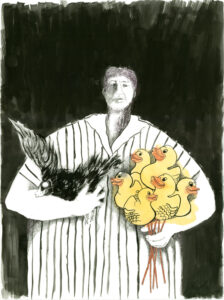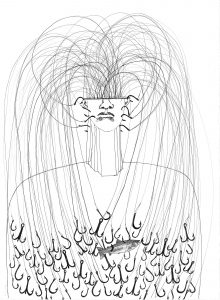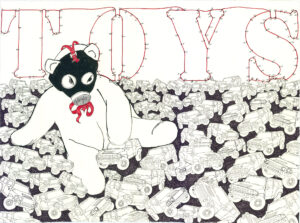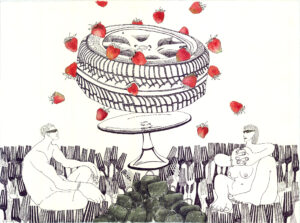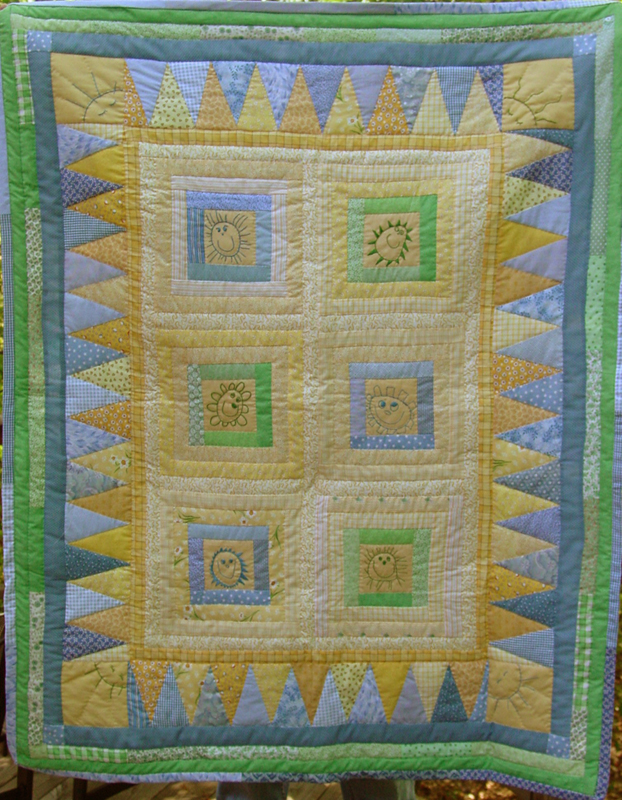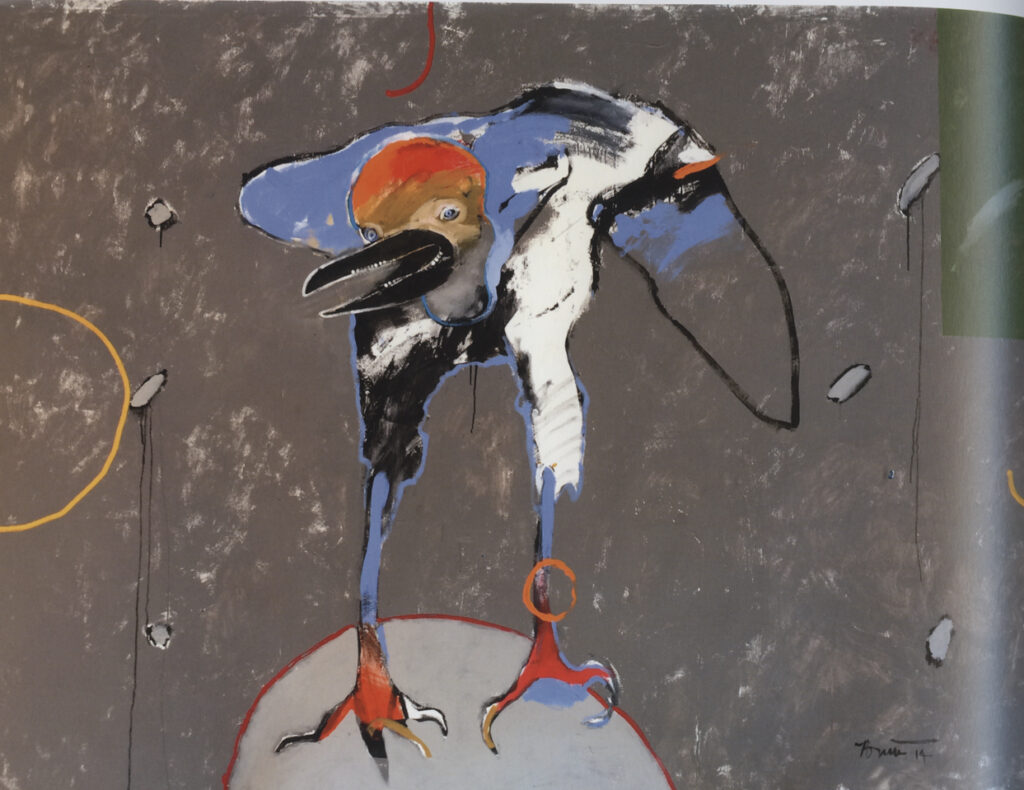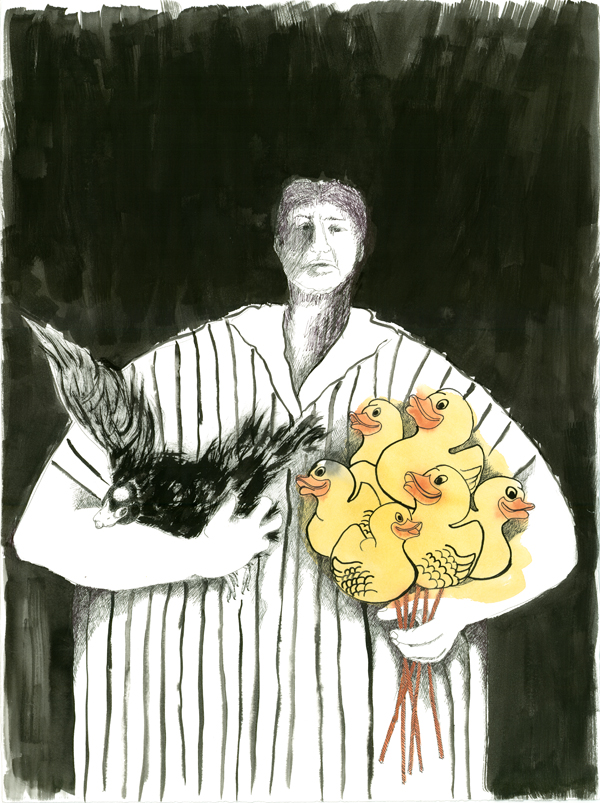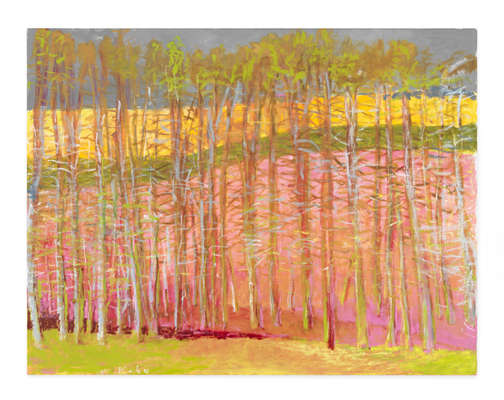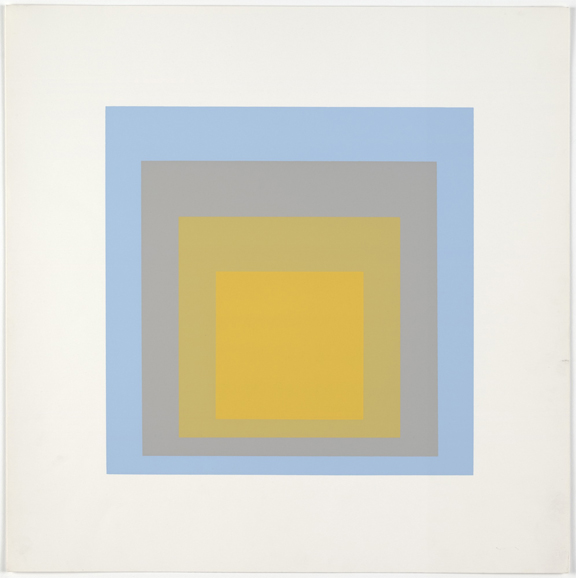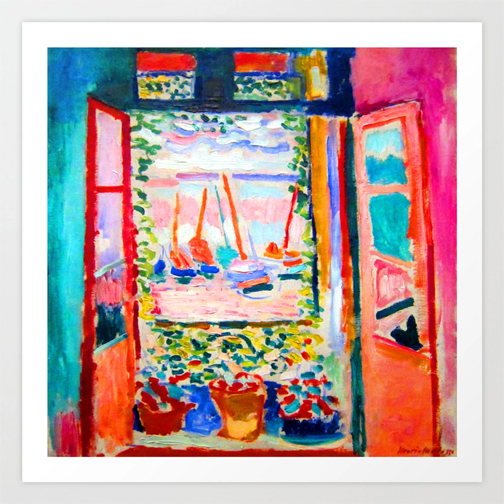Part I
“Ideas may be buried and surface slowly in pieces…Or they may burst out fully formed—and scare the daylights out of you.” –author, Ian Roberts
In these words Roberts describes how I found my what to the topic Altered Terrain, a subject which I explored for such a long time. Buried within, the first hint or prelude was a Round River series of drawings. They are about components of life on this planet Earth and how they form or “run through” humankind. Part of each drawing is a human figure as in the images below left: The River of Life Runs Through Me: Water. Writing names of endangered species form part of the torso—a chant, prayer or poem appreciating all living water beings. Likewise, The River of Life Runs Through Me: Endangered Species sings of those creatures who are in danger of being erased from our living planet.
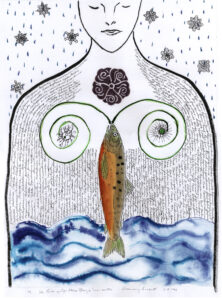
River of Life Runs Through Me: Water
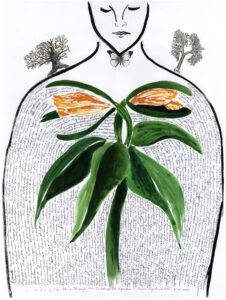
River of Life Runs Through Me: Endangered Species
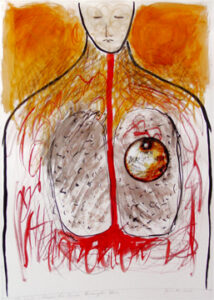
River of Poison Runs Through Me
Writing is how I came to understand how visual arts and poetry can merge together in one image. How the coupling teaches me about what I am imaging. How each piece pointed to another, and then another. Finally, The River of Poison Runs Through Me burst out fully formed and spawned so many Altered Terrain expressions over the years. In this series and the next I was exploring special papers, ink graphite transfer, and acrylic
Part II
Describing the terrain being altered by humanity is a big subject that surfaced slowly as one drawing led to another–as I read Moby Duck by Donovan Hohn, The Unexpected Universe by Loren Eisley, The Attentive Heart by Stephanie Kaza, and Round River by Aldo Leopold. I studied Running the Numbers: An American Self Portrait photographs by Chris Jordon. I allowed myself to explore special papers, inks acrylic, and collage. I carried the human torso from The River of Life images into the new, larger 22 x 30 inch format, and chose a language of rubber duckies, forks, machine parts, amphibians, birds, bones, maps, teddy bears, and metaphors as elements of my compositions. First, limiting myself to horizontal designs and then vertical ones.
The Altered Terrain images are especially challenging as they do not present solutions to the problems posed by humanities numbers and negative impact upon the planet. While the ideas kept leaping out and scaring me into action, they also jolt viewers. Nonetheless, I was compelled to mine the topic as long as the ideas presented themselves.
I was asked recently, “How do I avoid becoming depressed while working on these images?” The biology teacher in me compels me to keep working on the topic and to enliven some of them with humor and sarcasm. Once I begin a work, I am concerned technical issues. I ask myself how can I make an interesting composition within the parameters of the paper? What will the ink do if I apply it in layers using both pen scribbles and washes? What if I exaggerate one part of the design? Can I make use of arbitrary or conflicting components?
“True art is in the doing,” said French artist Jean Renoir. In the doing of Altered Terrain imagery, I find a measure of peace not tarnished by the negative ramifications exposed by the drawings themselves.
Similarly, Robert Houle, a contemporary artist from Sandy Bay First Nation in Manitoba, Canada, has confronted this issue. While physically and emotionally abused at his community’s Catholic mission run residential school, he found that those deep wounds could be reconciled and even healed through making art. He identifies with pahgedenaun, a Saulteaux term meaning “to let it go” from one’s mind. “Beauty is a way of tempering a narrative that could be a victimizing,” reflected curator Nanibush on the power of his painting “Sandy Bay.”
While Houle’s work is very abstract, my works rely on surreal juxtapositions of seemingly unrelated objects to explore relationships between humans and other living creatures. My compositions reveal a reality that goes beyond the natural world as we ordinarily perceive it, through atypical juxtapositions of its various elements. The fun is in trying out unusual combinations of forms and solving the mysteries of the links between them. The frosting on the cake are the reflective poems I often pair with images.
My first recollection of saving and recycling occurred when I went for a drive to the Rupert city “dump” with my dad and a bag of empty tin cans in the back seat. I was astonished to see piles of rubbish as well as discarded furniture and clothing. While exploring the heaps, I found a lovely little dress that I knew would fit my younger sister Lucy who was about two years old at the time. We laundered the dress in our wringer washer a couple of days later. The dress did fit Lucy. She was so darn cute wearing it to church the next Sunday! Since I was the eldest of four girls, my clothes were “handed down” to my other sisters when I outgrew them. My mother’s youngest sister Annie gave me her prom dresses and swim suits, which I wore whether or not they actually fit. Thus, the vocabulary of saving and recycling began to imbed itself in my psyche.

In the early 1950’s, my sisters and I were allowed to pick out fabric at the JC Penny store each summer. Our chosen cotton prints were cut up according to dressmaker patterns and sewn by our mother into school clothes. The patterns looked strange to me, but somehow, the oddly-shaped pieces all fit together and were magically transformed into a dress, a blouse or a pair of shorts. Delicately printed, empty twenty-pound flour sacks were turned into soft summer pajamas. Left-over scraps were saved and eventually pieced together to make curtains in our bedrooms or quilts under which we slept.
My mother showed me some of her childhood drawings, which gave me the notion that I wanted to draw too. The Big Chief lined school paper pads were unsatisfactory, so my mother carefully opened up unlined business envelopes for me to draw on. They were few and far between, but I used them all. At that time, drawing pads were not known to our family.
Being thrifty, collecting cloth and paper, then assembling these things into something usable was an integral part of my childhood life on the farm. Now, when I look back at this way of living, I understand how my adult art-life vocabularies were imbedded in my psyche during those early years. I synthesize imagery in my collage/paintings/sculptures and arrange words into my poems. Nearly all of my art pieces begin with collected bits and pieces containing references to stories which I then explore. For instance, a felt piano hammer suggested a bird neck and head, so that is what it became the first of many in my “Imaginary Bird” series.
It’s one thing to be inspired by a collection of cut up words or printed imagery, but without the painstaking ethos of fieldwork on the farm (thinning sugar beets steadily from breakfast to noon), I might have lacked the patience and perseverance to bring my complicated art pieces to fruition.
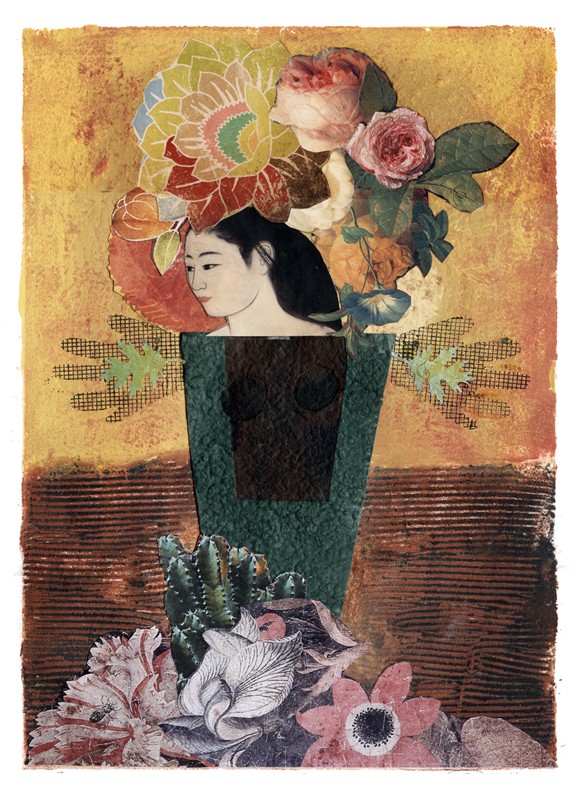
Earth Queen collage on print
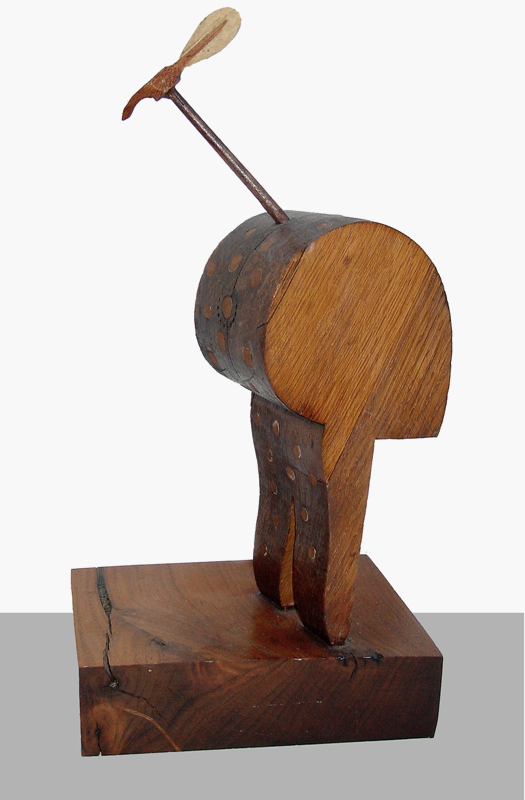
Polka Dot Bird; wood and felt piano hammer
Cloth Poem
Colorful, woven,
Fabric of Tibet, India, Korea
Flying from tree branches
Little prayer flags
Fluttering messages
Knotted wishes
The tree takes on a new life
Blooms with mystic intent
Reaches skyward
Singing silk songs
To the Awesome One
One has to be constantly on guard for the thoughts of self-doubt. It’s the artist’s bane. Artists seem always on the lookout for the myriad of excuses made so as to be absent from the studio. I used to tell this to my students. I tell it to myself every day.
Since we moved to Delaware and I left my huge free-standing studio behind, I focused my creative impulses designing and working in the garden in warm weather, and art in the wintertime studio. It’s harder for me to not step into my studio now as it is on the way to the bedroom and I see some finished/unfinished pieces on the wall every day. Still, the focus comes hard. The upside of an in-house studio is how, once one relents, steps in and starts to maneuver materials, the focus usually comes, creativity is given free reign, and time flies by. Oregon Native American artist speaks of this dilemma in a book published by Jordan Schnitzer Museum of Art, University of Oregon, Eugene, 2015; Rick Bartow, Things You Know But Cannot Explain.
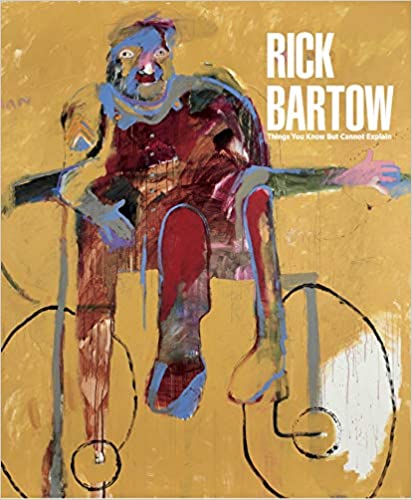
After 40 years of artistic exploration interspersed with illness, Barlow doesn’t wait for the muse. “‘That’s a fallacy, a myth, a bad plan,’ he explains. Rather than hope for inspiration or expect enlightenment to suddenly strike, for Bartow it’s all about working, getting in the studio and making marks, day in and day out. ‘I’m an old man. I know what an old man knows,’ he shares. ‘But I am still looking for solutions. It’s the process of creating that is important.’”
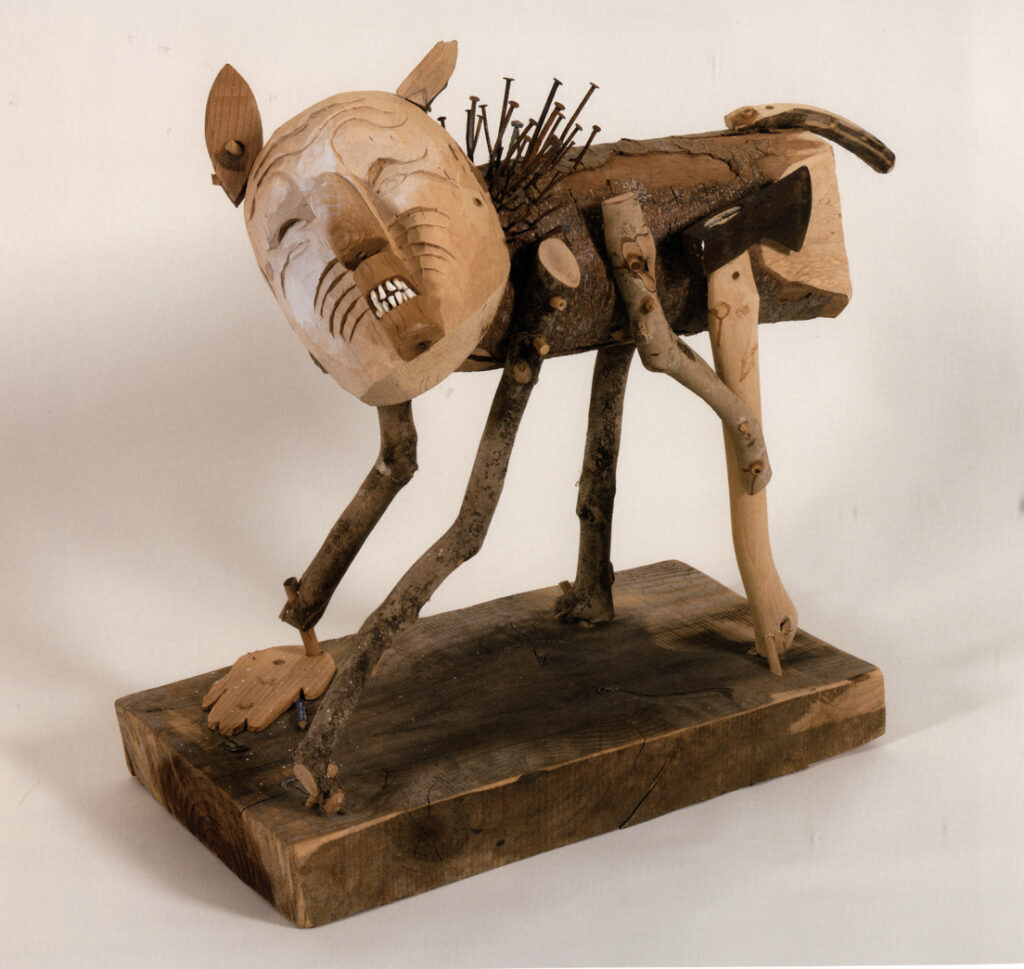
Man Acting Like Dog; 2009
“Bartow’s work is a testimony to art’s capacity for dialogue, story-telling and record-keeping. It facilitates a connection between the past and the present as well as between the physical and spiritual worlds. In doing so, his work invites viewers into the conversation.” (Jill Hartz, Danielle Knapp, 2015) The book’s thematic guide: Gesture, Self, Dialogue, Tradition, Transformation is filled to overflowing with his motivations as he participates in the creative process. Thank you Rick Bartow.
Fantastic Plastic
“Farewell to the broom made of heath and grass
Farewell to the glass and the basket
Folks of today are more enthusiastic by far
For anything that’s made out of plastic”*
Yes, I’m the plastic newcomer
tactically spawned from petroleum
I’m a fantastic immortal oil child
bearing emblems
of ancient polypodium, wild plankton
and pond scum
I’m a millions-year-old modified baby
freshly launched and propelled unsafely
my staying power
grows by the hour
I’ll never decay or go away
I am your essential disposable medical device
your billions of water bottles on ice
your single-use fork, knife, dish
I am your major ocean polluter and killer of fish
I hear you sing my praises line for line
“Rubber Duckie, you’re so fine
And I’m lucky that you’re mine
…I’m awfully fond of you
Rubber duckie you’re my very best friend it’s true” **
Yes, I am plastic and though I have been called “cheap”
my price is quite steep
Since this dystopian utopia of
staggering rubbish is here to stay
my bill is due today
How would you like to pay?
Cash, check or plastic?
*The Life of the Rover by the Irish Rovers (paraphrased)
**Sesame Street song, Universal Music Publishing Group
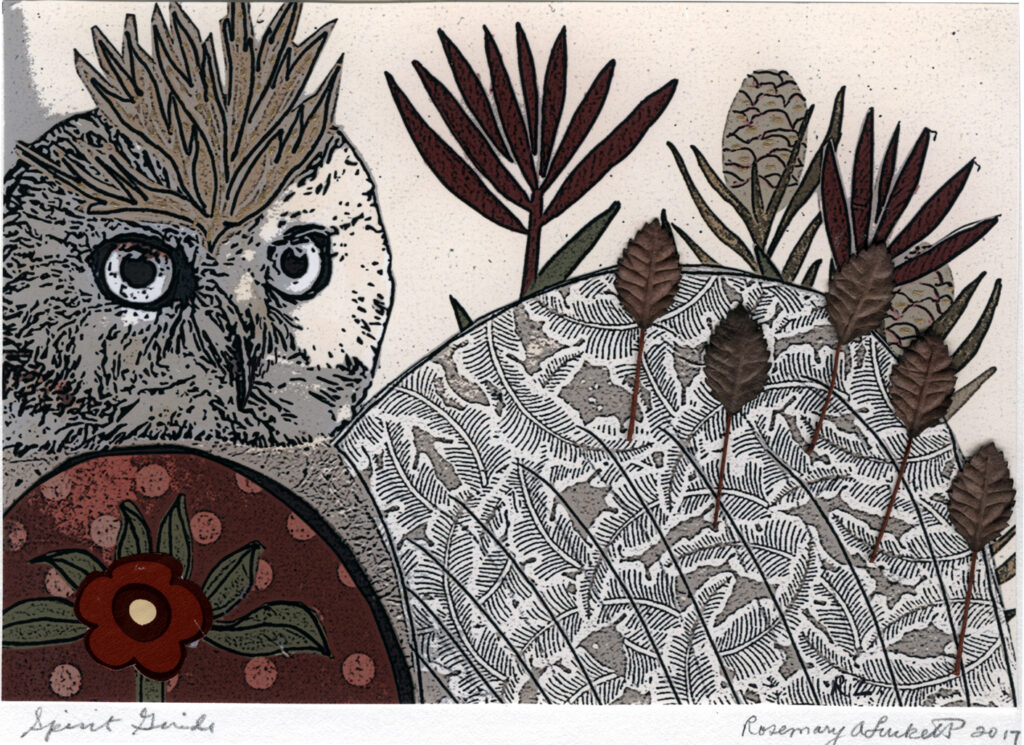
Spirit Guide
Photo Collage
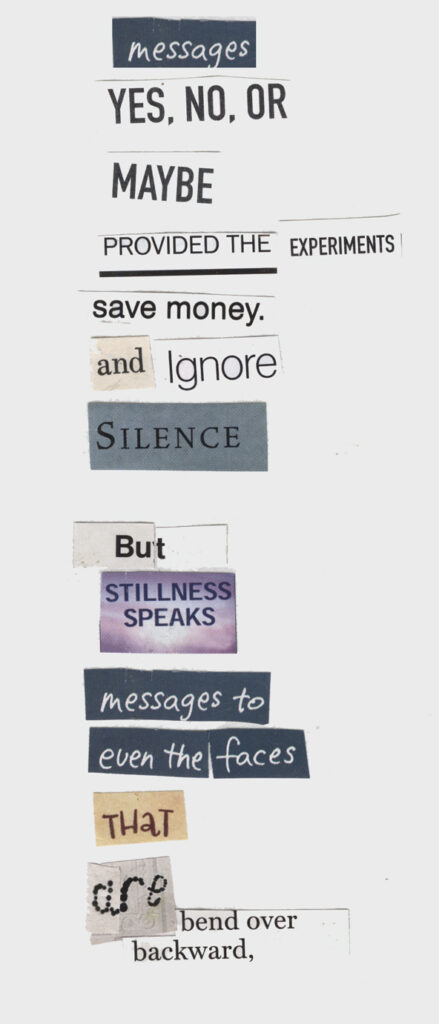
This first week of January speaks of enigmas and the idea that we must change our usual perceptions so as to reach some understandings of our planetary changes and how each might listen to silent (sometimes deadly viral) messages as well as noisy stormy flooding ones.
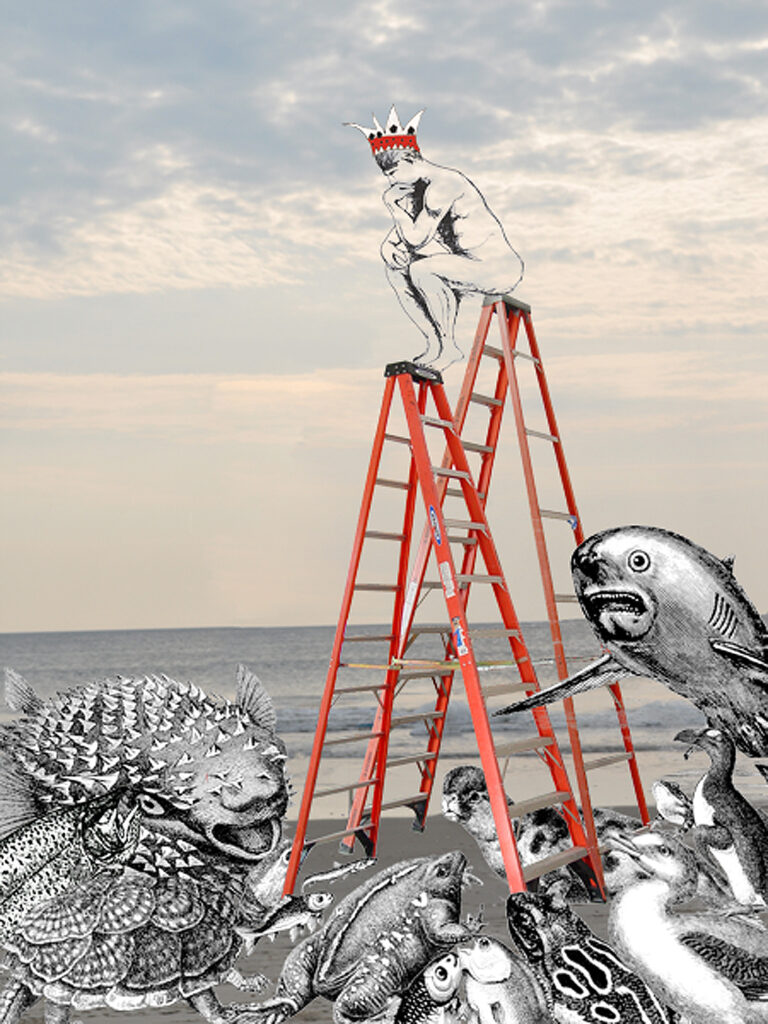
Henri Matisse is one of my great teachers. First, I was attracted to his linear simplified drawings that showed form through line rather than modulation indicating light and shadow. Equally intriguing was his use of color patterns, relationships and spontaneous composition. While Monet was, in a sense, a slave to nature (Rene Schwob), Matisse submits to nature only in order to make use of it. A clear example of being inspired by a subject and then altering it in the composition several times before being satisfied is evident in the photographs of states I-XXII Reclining Nude that he sent to Etta Cone his friend and a collector. Matisse modified the painting twenty-two times before settling on the defininative 26 x 26 inch painting. To see the twenty states Matisse documented go to this site: https://studylib.net/doc/5413421/reclining-nude-by-henri-matisse/.
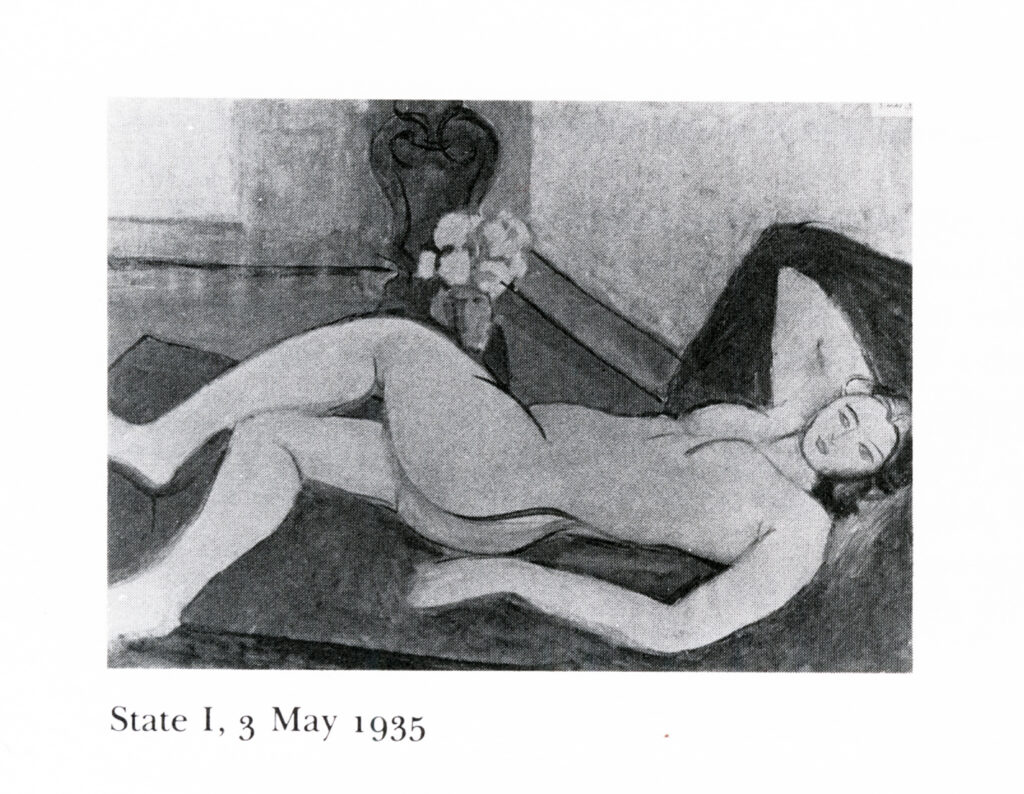
Matisse Reclining Nude state 1
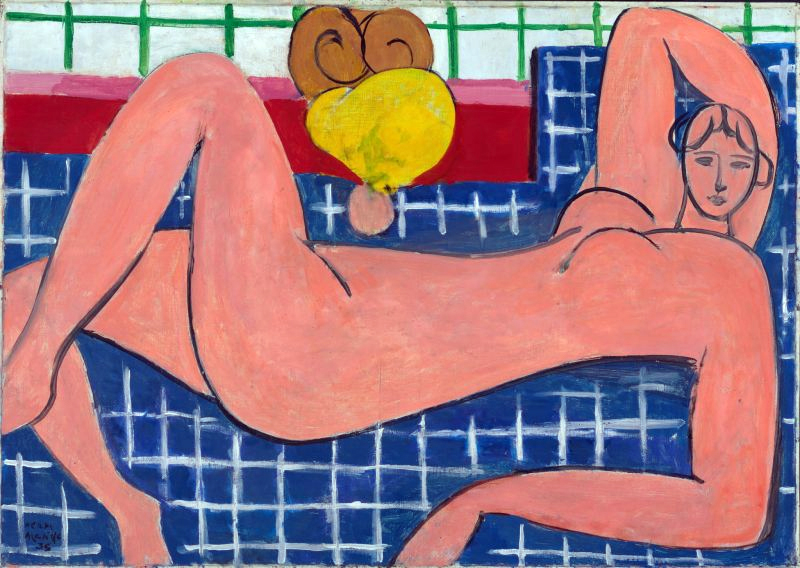
Matisse Reclining Nude state 22
I, too, shapeshift my collages and paintings before settling on a composition that feels right to me. It’s a process that is sometimes disconcerting and sometimes enjoyable. The decisions often take weeks to make, if not years. The one I am currently working on is Running Girl, which began as Maiden and over months was transformed into a figure entirely different except for the face. Most of the ideas for this transformation came from working on many 5 x 7 collages of “Garden Queen” figures. The acrylic paintings include collage elements of paper and lace. I amplified the complexity of spaces around the figure in the changed painting. There are about about five states in between the first and the second image.
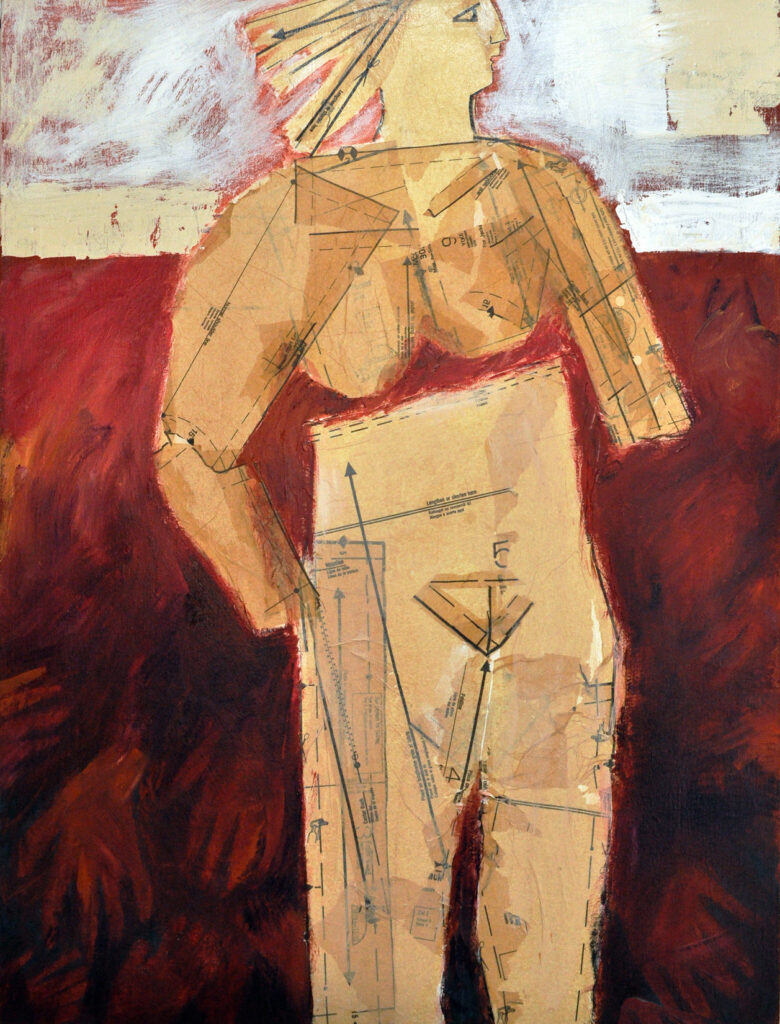
Maiden: state one, 30 x 40 inches
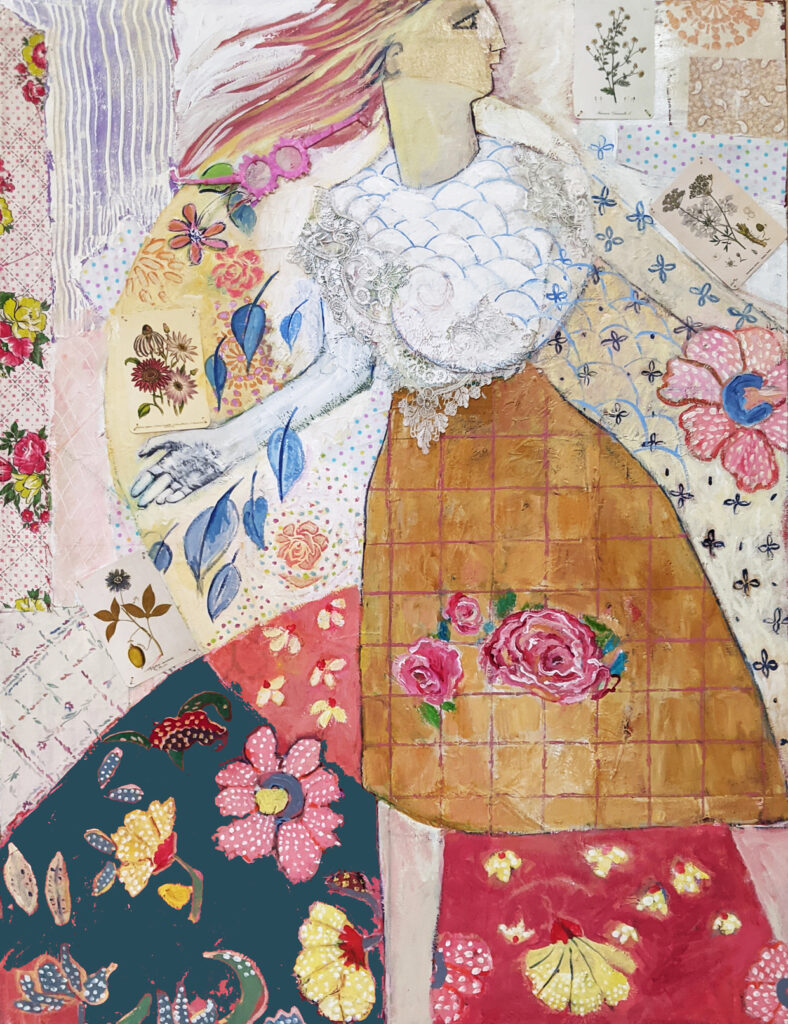
Running Girl-definitive state, 30 x 40 inches
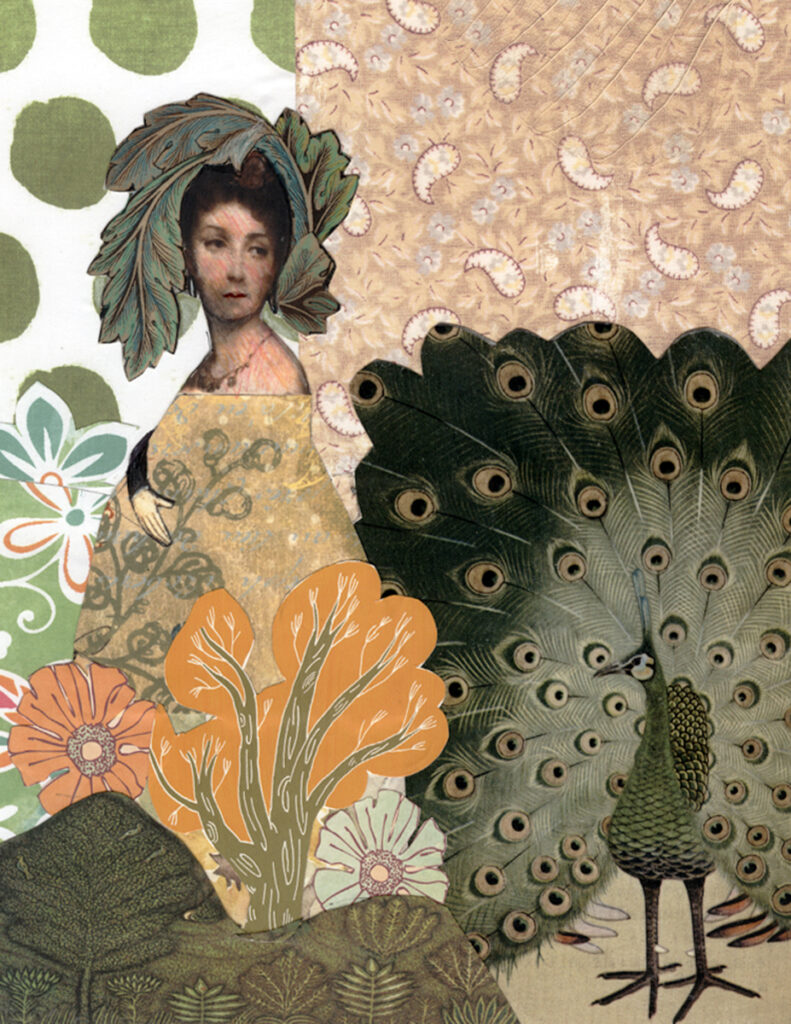
Peacock Queen-5 x 7 inch collage
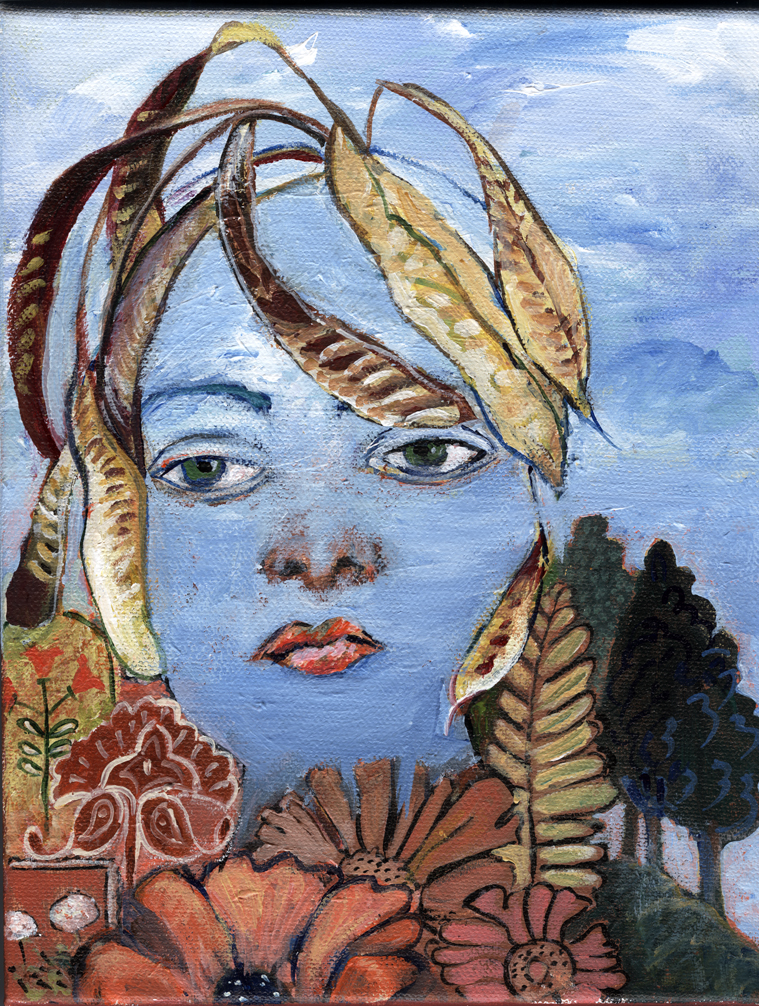
Sky Woman (acrylic on canvas)
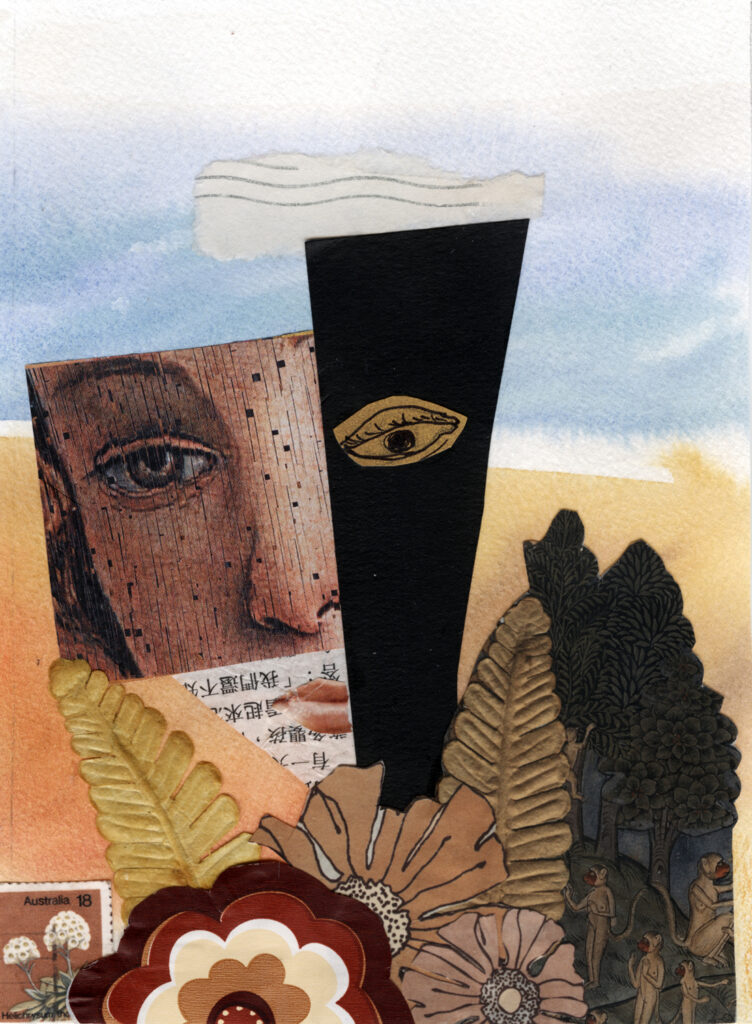
After moving from Virginia to Wilmington Delaware, my task was to settle into a different house and smaller studio. Unpacking seemed to take forever, so my cluttered “new” studio lay abandoned for a while. Finally, driven by pandemic quarantine, I pulled out a few collages already in progress and made myself stick to a 5 x 7 inch format until 20 faces materialized, each with its own characteristics and personality. These small “portrait” collages are made from paper and a variety of other materials. One downside of the process was that a ceiling leak dripped water directly on some of my working papers. The upside is that I decided to translate the images onto 8 x 10 inch canvases using acrylic paint. Working with small canvases reversed a long-time interest in much larger scale paintings exhibited in my recent 2018 Touchstone solo. Landscapes: The Terrain Within. https://www.touchstonegallery.com/rluckett-landscapestheterrainwithin/
Making each paper collage took three times longer to form than I expected. Making each painting also took at least three times longer than planned. But the joy of working with paint again outweighed time concerns. Some painted versions morphed into a completely different expressions from the collage counterpart. All are invented and diverse in nature. Many of them are whimsical. They became my friends during the pandemic when most venues in Wilmington were closed. I mentioned to a long-time friend, “I don’t know who these women are.” Without actually seeing them she suggested, “Maybe they are Everywoman.” So that is how I am seeing them for now. (It was her parting gift to me before she died. Thank you Margee Iddings.)
Look at the images in the composite portraits in the Artwork section of https://rosemaryluckett.com/composite-portraits/ rosealuckett@gmail.com
5 x 7 inch—@$100 shipping included
8 x 10 inch paintings–@$200, shipping included
For the past few weeks I’ve been putting together a Blurb book Altered Terrain: Changes & Consequences. The mostly black and white images were made about ten years ago. I arranged them with commentary or poetry which I have done with the series from my recent solo exhibitions. The first poem is “At This Place” which was written at the time I was giving art workshops at the Rising Phoenix Retreat Center in Maryland between Hancock and Cumberland in the mountains. It’s a description of that place and our country as well. A bittersweet place to visit or live in especially in the days of lies and violence. How it was long ago and how it is now.
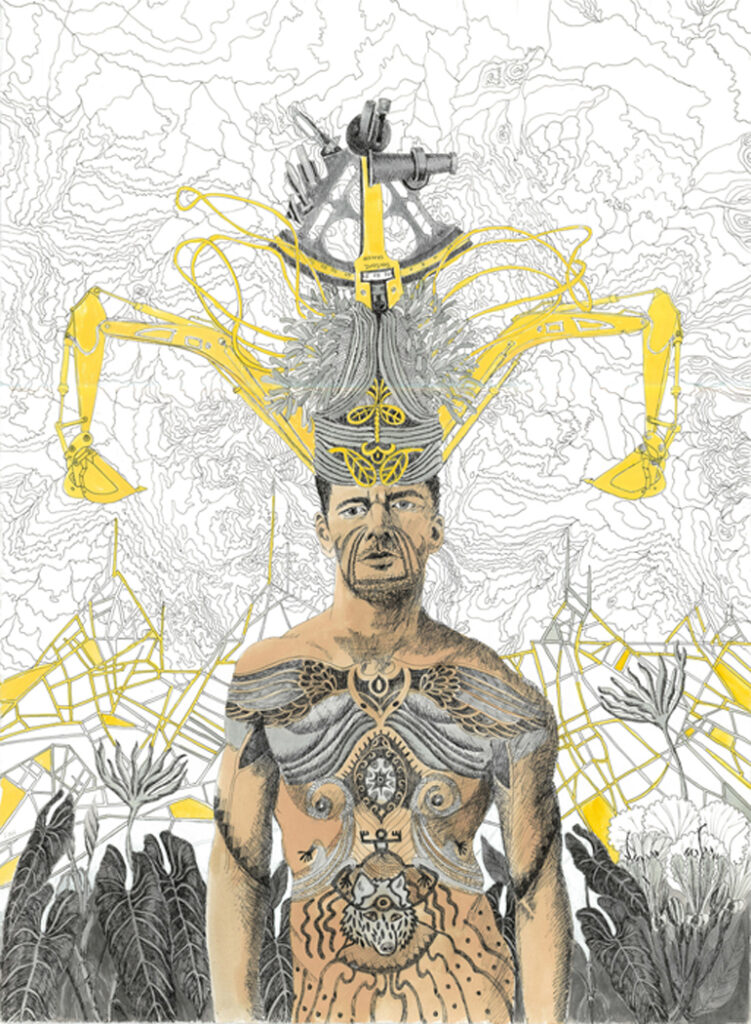
“Lost”
ink and acrylic
22 x 30 uf
At This Place
before engineers measured mountains
and blasted out triangles of purple stone
from the peaks.
Before trucks and cars flowed like rivers
through the haze on the hills
Pumas padded softly along spiraling deer trails
in tandem with the elm, the hawk, the snake,
the otter, the sky, the earth, creek, and sun.
Indians carved petroglyphs into cliffs
and looked out across silent valleys
meandering rivers
blankets of trees
blue ridges
With sun in their eyes at days end
they breathed in the velvety air
and exhaled cloud remnants of the river
where they drank with the deer
They breathed in the sky, the moon, the land
and took it deep into their hearts
where no word is spoken
where person and land meld into one.
The Natives turned then and disappeared forever
into blood red rain clouds and meadow graves
while on their heels the farmer planted
the first apple tree now nearing ripeness
and carved out fish farms at the slope’s base
felling trees and burning veins of coal
All is stillness and calm until cicadas sing
to cows belly deep in Queen Anne’s Lace,
Cosmos, and meadow grass
All is stillness until the first truck grinds its way
long narrow roads that wind uphill and down
All transformations are witnessed in silence
by the owl and the bear
by trees bearing cicada eggs
in the fullness of green
by leaves layered palms up reaching for the sun
by leaves fallen brownly on forest floor
keeping company with frogs, a smashed bench,
a doe with twin fawns.
Lost to the ones who are lost.
Upon leaning of the death of Wolf Kahn, I got to thinking about his use of color and how attracted to it I was. Except for an exhibit that I saw in a small gallery on 7th Street near D Street in the late 80’s. Those works were atypical because I remember only green landscapes were included. The painting below (oil or soft pastels) is more typical of his use of color.
Art is “about intuition, imagination and fantasy,” Mr. Kahn told a Vermont arts publication. “Once you have your nose pointed in the right direction, you can start smelling something. It’s not about expertise. I don’t believe in it. I believe in innocence of spirit.” Wolf Kahn
Josef Albers, on the other hand, seemed to take a more “scientific” approach to color. He did many “Homage to the Square” experiments in which he juxtaposed one color upon upon many others to illustrate the effects of the foundation color on the color he placed upon it. We take color for granted until Albers came along back in the day at the Bauhaus School, Black Mountain, North Carolina and showed us explicitly the ways in which a color affects the other colors next to it.
“Simultaneous contrast is not just a curious optical phenomenon – it is the very heart of painting. Repeated experiments with adjacent colors will show that any ground subtracts its own hue from the colors which it carries and therefore influences.” (Josef Albers)
I’m not sure how my mind works in determining the colors I use. I exaggerate the colors in a landscape painting on purpose, or I work in black and white with the addition of one color…such as red or yellow. In any case, the determination of color seems difficult. I am still trying to find an easier mode. As Henri Matisse said,
“It is not enough to place colors, however beautiful, one beside the other; colors must also react on one another. Otherwise, you have cacophony.” Easier said than done, I say. In any case, these artists teach me to keep on going no matter how unsure I am, no matter how many times I fall off the cliff of invention.
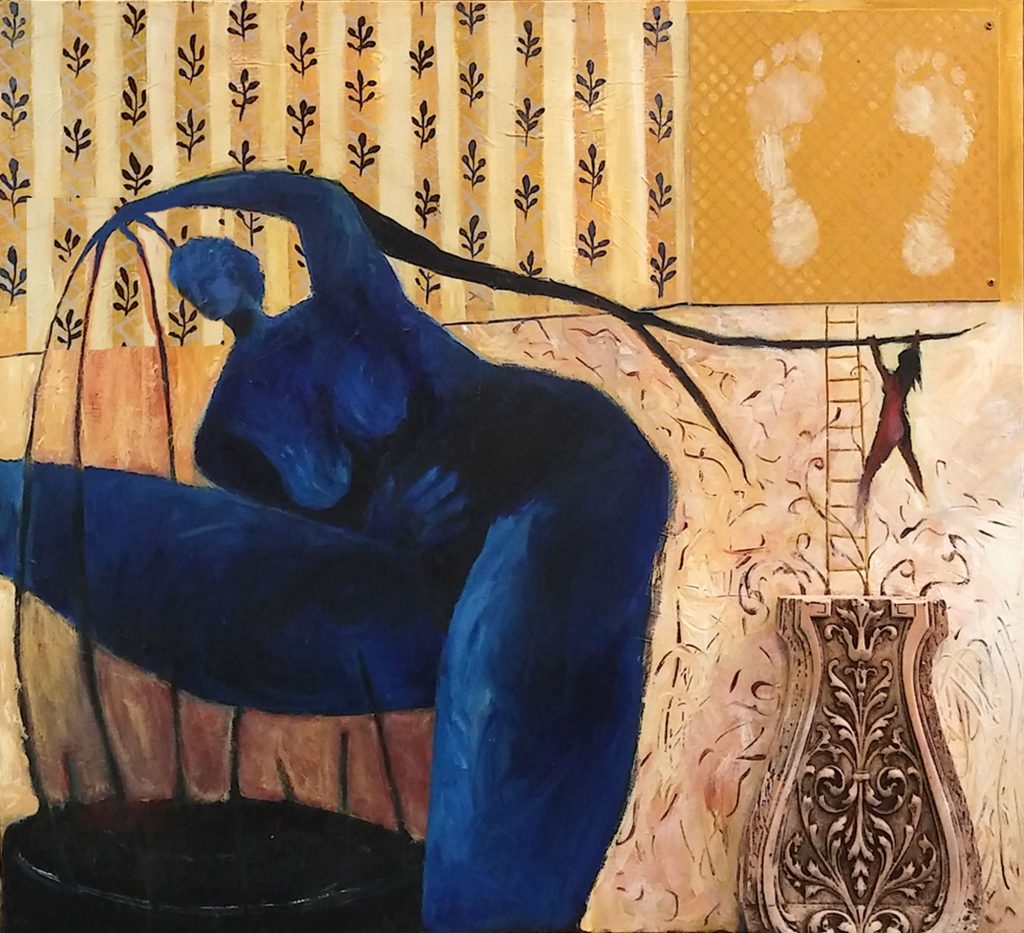
Seeking Confidence, Rosemary Luckett
I relocated to Wilmington DE from the VA/DC area in 2018. My first exhibit (2019) in Wilmington, Transformed Terrain, was inspired by connections between an altered natural terrain and the people who change it directly or indirectly, from close by or from a distance, on purpose or unwittingly. Further inspiration comes from artist Rene Magritte who taught, “the apparent visible and the hidden visible…in nature are never separated.” My detailed ink collage drawings point to the seemingly invisible circle of life concealed throughout the Earth, and act as metaphors for American culture and commerce. Figures dominate some drawings and hide within others, yet they reveal associations that a viewer might not have noticed before. I pair nooses with mega-coal-mining equipment, angel’s wings with a nuclear power plant, and rubber duckies with live ducks. The fun in looking at these works is to discover connections between seemingly disparate entities.
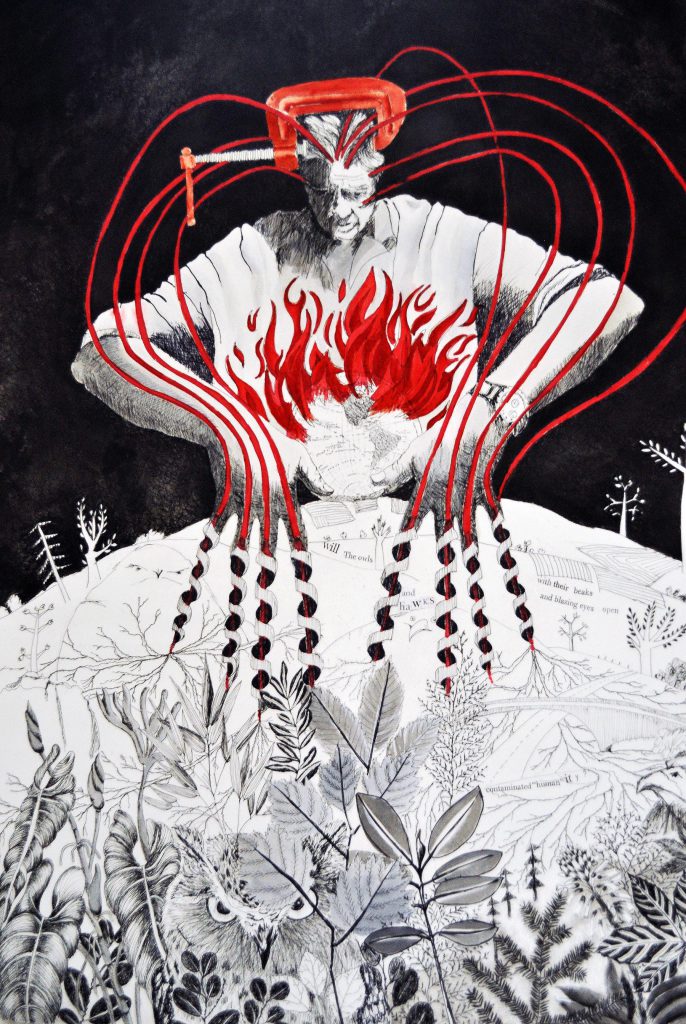
I usually write about each piece in an exhibit and often combine the writing with images in books. I have yet to do this with this series, but intend to do so in the coming weeks. Interestingly while I made the large drawings ten years ago, the themes they illustrate are alive and of great importance today. Last month I wrote here in the blog about fires raging in Australia. This month I continue the fire theme. As population increases worldwide to over 7 billion, the demand for fossil fuels also increases. Those companies providing fuels are expert at extraction, often using a fracking technique that forces water and secret chemicals into the ground to force natural gas to the surface. Immediate side effects are earthquakes and groundwater and well pollution. As tankers and pipelines spill, living creatures in the web of life suffer and die to humanity’s detriment.
In this drawing, the clamp on humanity’s brain is fed by the fuel, which causes addiction, dependency and a craving for more. The story of what extracted fuels, like coal, are doing to the earth is long and depressing, and the connection between fuel, humankind, flora and fauna of the planet is more and more obvious each day. Perhaps I’ll think of a way to put windmills into the next picture as humankind tries to veer away from these fuels to solar, wind and wave production of electricity.
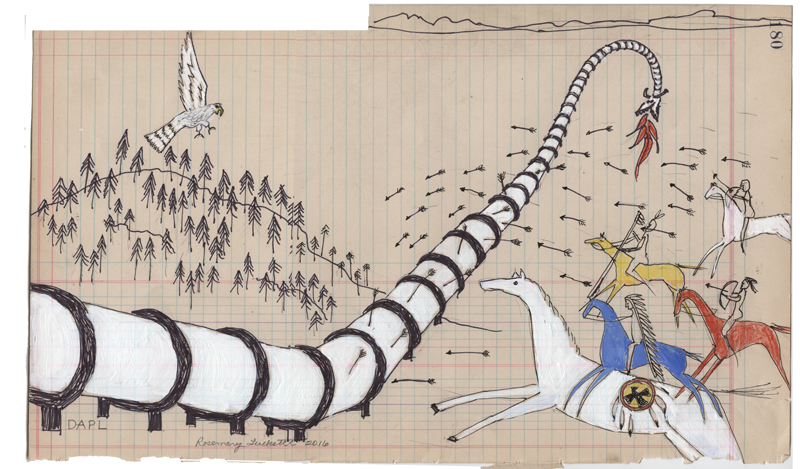
Standing Rock Sioux Fight the Dakota Pipe Line 2017
In this collage drawing, I used a ledger sheet, as some Native Americans did in the past, to show the meager resources the tribes have to fight pipelines on their territory today. They resist because pipelines often break and poison the earth and water (which is why the city of Bismarck, ND did not want the pipeline near their area.) Although the Sioux were assured there would be no breaks and environmental studies were truncated and rushed through, two breaks in this pipeline spilled 383,000 gallons of oil in 2019 just two years since its installation.
Imagery in this collage recalls the story of how the monster Unktehi attacked the tribe long ago. Luckily the Great Spirit in the form of an eagle, saved them from the monster then. Despite tribal protests and resistance, the pipeline companies are having their way while periodic pollution of the landscape continues. And the rest of us who are fed by the pipeline have our gasoline and natural gas.



